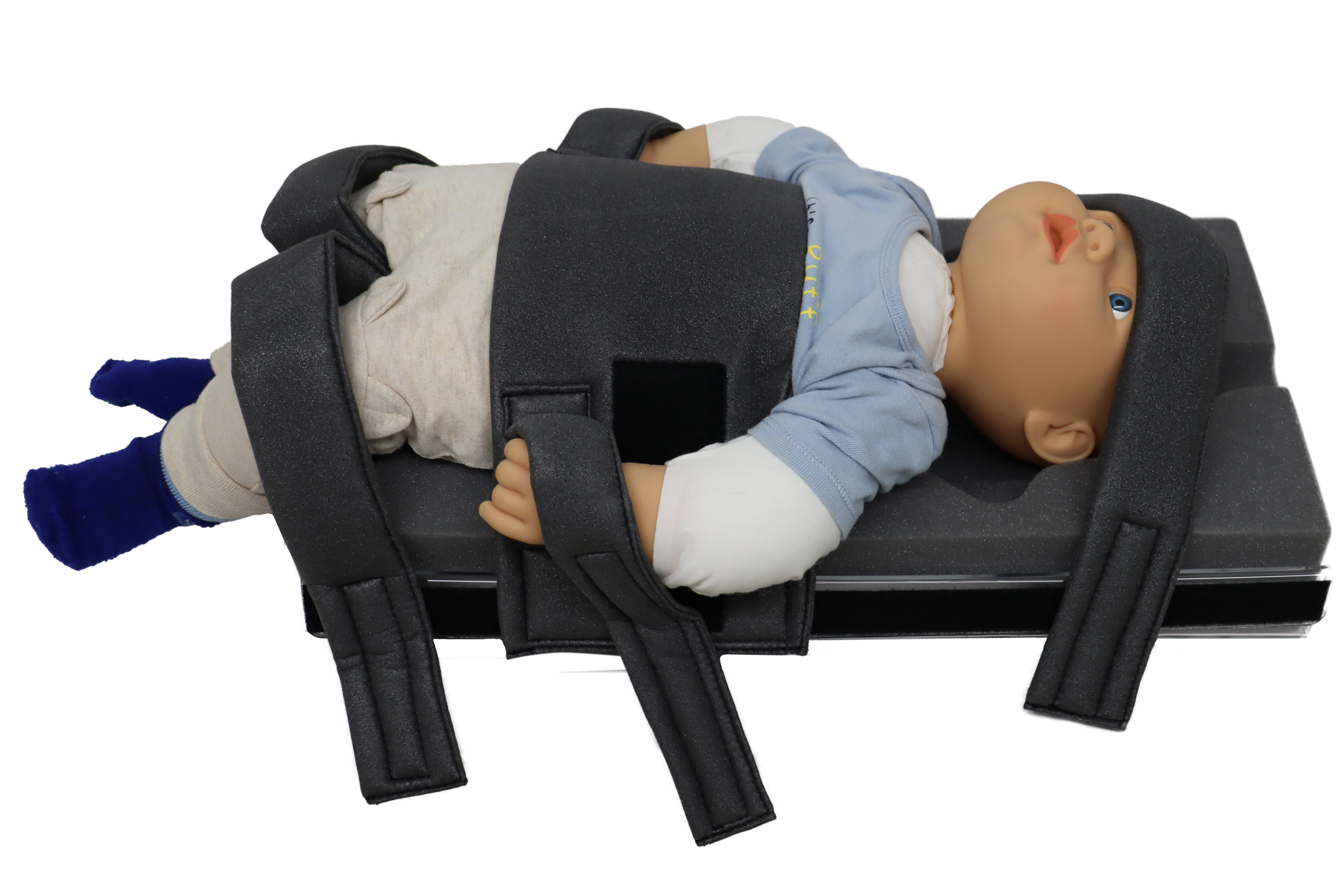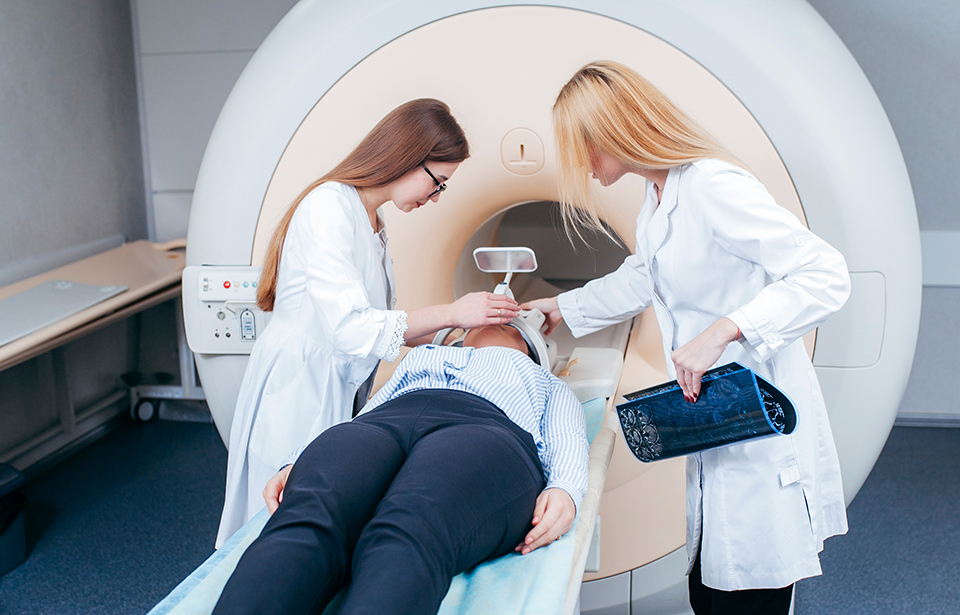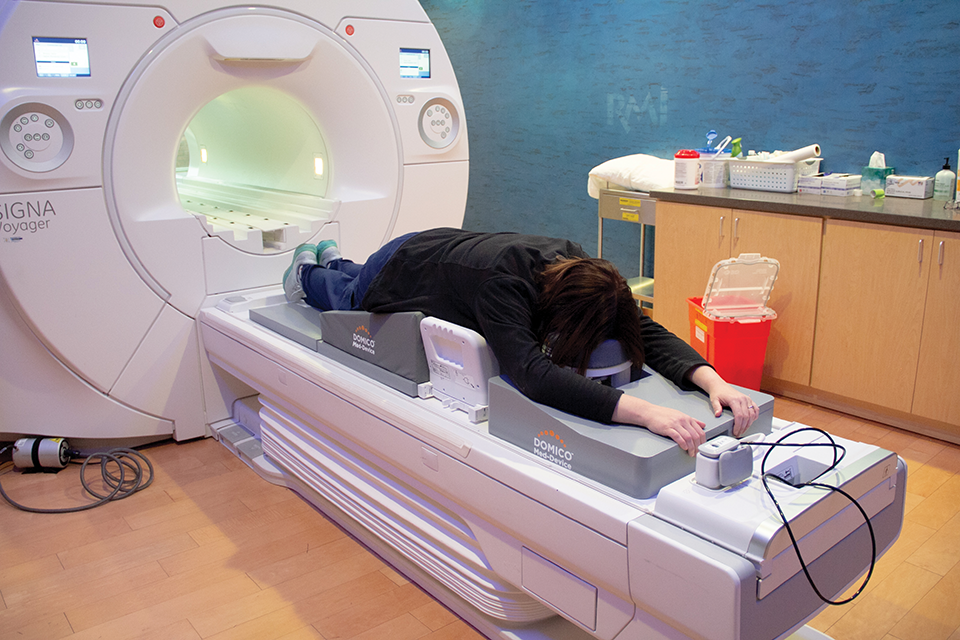A Comprehensive Guide to Pediatric Patient Positioning in Diagnostic Imaging
Discover essential techniques and considerations for optimizing pediatric patient positioning to enhance diagnostic accuracy and patient comfort in...
4 min read
Domico Med-Device June 20, 2023
This is Part 2 of a 3-part series on patient positioning factors that improve imaging and therapy success. Part 1 discussed how patient positioning impacts image quality. In Part 2, we’ll detail how patient positioning influences comfort and safety.
Successful therapy depends not only on medical outcomes but also on the patient experience. Comfort and safety are integral to positive patient experiences, which in turn drive better results for hospitals. Here are ways patient positioning – in particular, your choice of positioning aids – influences comfort and safety to optimize imaging and therapy.
Part 1 of this series discussed how radiolucency promotes image quality. The lower the attenuation, the better X-rays can pass through, resulting in clear images.
The same concept applies to patient safety: the lower the attenuation, the lower the radiation dose required to achieve clear images. That means less radiation per sequence and less likelihood of re-imaging that exposes patients to more radiation.
Patient positioning aids made from radiolucent materials are safer for patients, especially pediatric patients because they reduce overall radiation exposure.
For example, one type of memory foam has a 2.4% attenuation at 120 kVp (kilovoltage peak, which refers to X-ray strength). Open-cell foam has a 1.9% attenuation at 60 kVp. In this comparison, open-cell foam can provide better attenuation than memory foam at half the radiation dose.
|
Material |
Thickness |
kVp |
Attenuation |
|
Memory Foam |
0.5” |
120 |
2.4% |
|
Open-Cell Foam |
0.5” |
60 |
1.9% |
That isn’t to say memory foam is a poor choice; it features low attenuation and is commonly used in patient positioning aids. Rather, it’s simply to illustrate how material selection plays a role in radiation dosage and patient safety.
 Design
DesignGood product design leads to better patient experiences. Products designed with contours for more natural, even neutral, positioning are more comfortable (for example, armboards that cradle patients’ arms rather than allow them to dangle off the table).
Human factors in design – ergonomics and padding – can help prevent:
Pressure injuries
Nerve damage
Restricting respiratory or circulatory function
Skin shearing and tearing
Collisions with detection equipment
That’s significant, considering that surgical departments account for 42% of hospital-acquired pressure ulcers, and it can cost $3,000 to $30,000 to treat a single pressure ulcer (AORN, Outpatient Surgery Magazine).
Patient positioning aids that stack layered materials enhance patient comfort, safety, and efficiency. For example, a positioning aid might have multiple layers of foam, a rigid structural component, a non-slip backing, and a durable, comfortable fabric cover.
Good fabrics are moisture-wicking, breathable, and antimicrobial, often offering 2-way or 4-way stretch and recovery. High-quality fabrics reduce the risk of hospital-acquired infections and shearing or tearing sensitive skin, especially for immune-compromised patients prone to skin conditions and infections.
Here’s how a patient positioning pad might be designed with layered materials:
|
Layer |
Purpose |
Example Materials |
|
Top |
Comfort & reduce risk of pressure injuries |
Memory foam |
|
Middle |
Stiffer layer that helps maintain proper positioning and prevents patients from “bottoming out” |
EVA |
|
Bottom |
Structural stability |
Carbon fiber, plastic, polycarbonate or Kevlar |
|
Non-Slip Backing |
Prevent slips and falls |
Vinyl |
|
Outer Fabric |
Comfort, prevent injuries, shearing and tearing |
Healthcare fabric |
Collectively, these materials offer patients the support and comfort they need while allowing X-rays and other imaging to pass through with lower radiation doses, resulting in safer, clearer images.
Additional accessories can enhance patient comfort and safety, yielding better imaging and improved outcomes.
For example, straps keep patients safely and comfortably stationary, while table extenders provide stability for a variety of procedures. Bariatric extenders accommodate larger patients to reduce fall risk.
Rail extenders with quick-change accessories keep patients safe by enabling caregivers to instantly switch from a minimally invasive procedure to an open procedure that requires retractors, such as an abdominal aortic aneurysm procedure.
 Carbon fiber arm boards can pivot to keep patients comfortable and allow imaging and caregiver access, while a Mayfield/DORO Adapter for skull fixation stabilizes the head during imaging. Knee bolsters relieve lower back pressure, helping patients remain comfortable and still yield better images.
Carbon fiber arm boards can pivot to keep patients comfortable and allow imaging and caregiver access, while a Mayfield/DORO Adapter for skull fixation stabilizes the head during imaging. Knee bolsters relieve lower back pressure, helping patients remain comfortable and still yield better images.
Additionally, specialized headrests, body wedges, and limb positioners can be utilized to maintain optimal positioning for both comfort and effective imaging. These accessories are particularly useful in complex imaging procedures where precise positioning is critical. For instance, in MRI and CT scans, keeping the patient still is crucial for clear images. Proper positioning accessories help in minimizing patient movement, thus reducing the need for repeat scans and lowering overall radiation exposure.
The use of bariatric positioning aids has also become increasingly important. With the rising prevalence of obesity, standard positioning aids often fall short of providing adequate support and comfort for larger patients. Bariatric aids, designed to handle higher weights and larger body dimensions, ensure that all patients receive the necessary care without compromising on comfort or safety. These aids are built with stronger materials and enhanced support structures to accommodate larger body sizes, preventing the risk of pressure ulcers and other positioning-related injuries.
In pediatric care, the importance of comfort and safety in patient positioning cannot be overstated. Children are particularly sensitive to discomfort and may not be able to communicate their discomfort effectively. Pediatric-specific positioning aids, such as the Child Hugger, are designed with softer materials and smaller sizes to provide gentle support and maintain correct positioning. These aids help in keeping young patients calm and still during imaging procedures, leading to better diagnostic outcomes and a more positive experience for both the child and their caregivers.
Another key aspect of enhancing patient comfort and safety through positioning is patient education and involvement. Educating patients about the importance of proper positioning and how it affects their treatment outcomes can lead to better cooperation and reduced anxiety. Providing clear instructions and involving patients in the positioning process can make them feel more in control and comfortable during procedures.
For instance, explaining how a particular positioning aid will help them remain comfortable and reduce the need for repositioning or repeat scans can alleviate patient concerns. Involving patients in adjusting the aids, such as allowing them to position themselves comfortably before final adjustments are made by the healthcare provider, can also improve overall comfort and satisfaction.
Furthermore, using visual aids, such as diagrams or videos, to demonstrate proper positioning techniques can be particularly helpful for patients who may be anxious or unfamiliar with medical procedures. This educational approach not only enhances patient comfort but also fosters a sense of trust and collaboration between patients and healthcare providers.
Read Part 3 of this series to see how patient positioning can foster efficiency and accessibility.

Discover essential techniques and considerations for optimizing pediatric patient positioning to enhance diagnostic accuracy and patient comfort in...

This is Part 2 in a 5-part series about optimizing multi-procedure imaging systems. Part 1 offered an overview of the benefits. In Part 2, we’ll...

Discover how medical positioning aids improve patient comfort and safety during medical procedures.